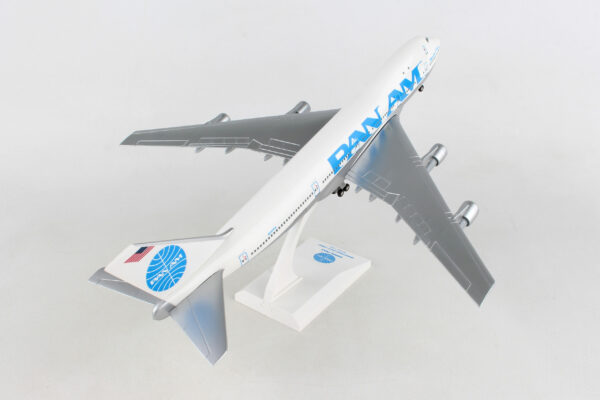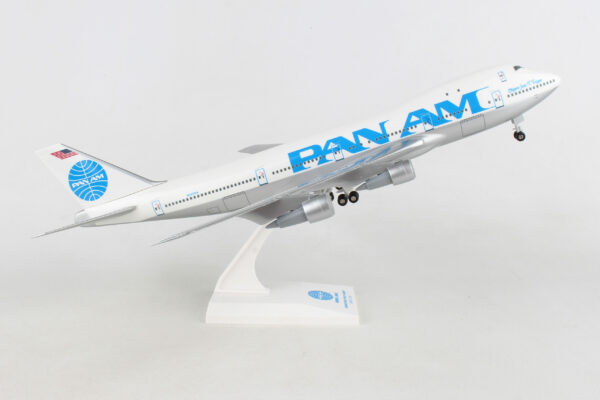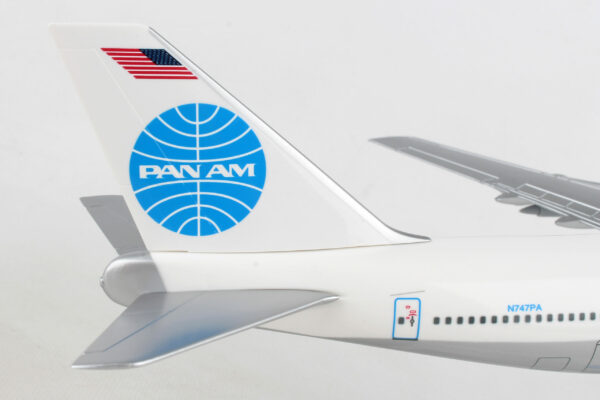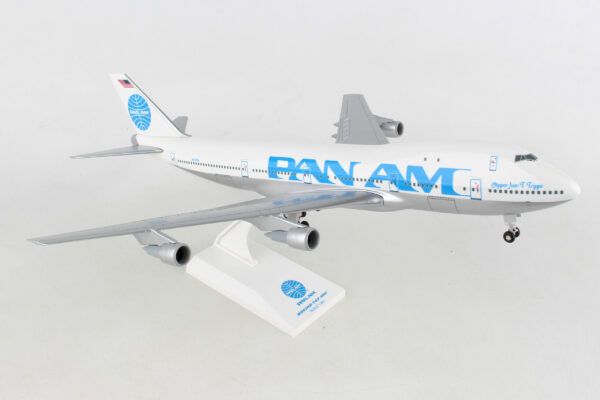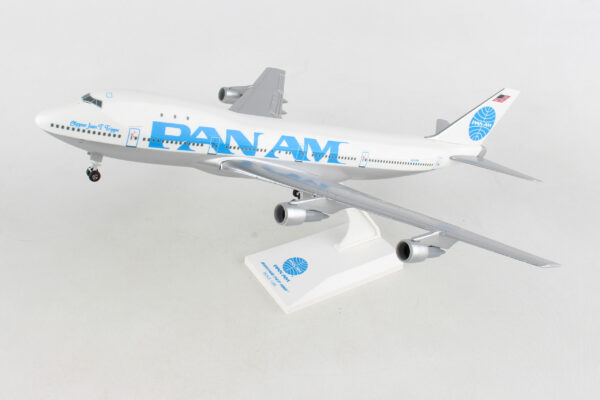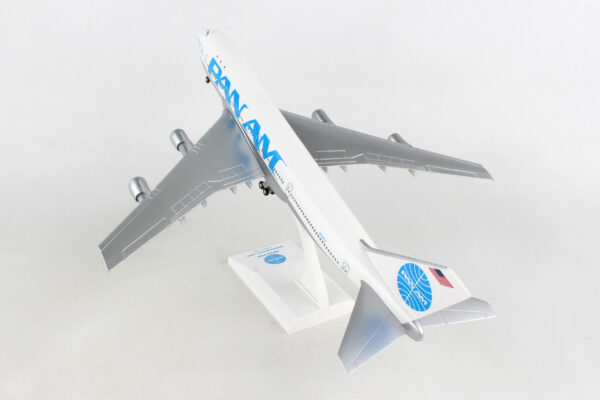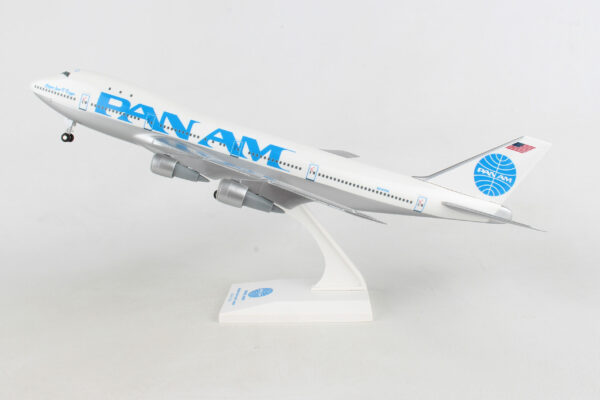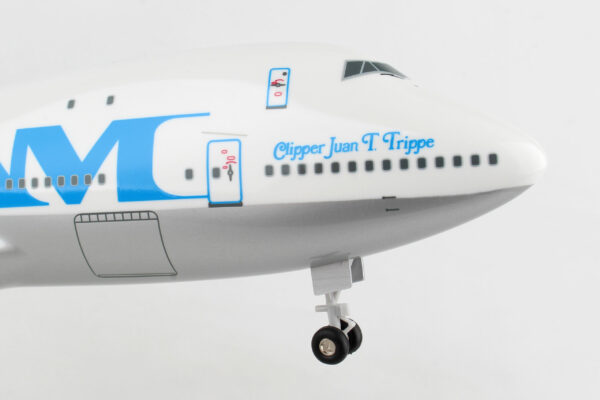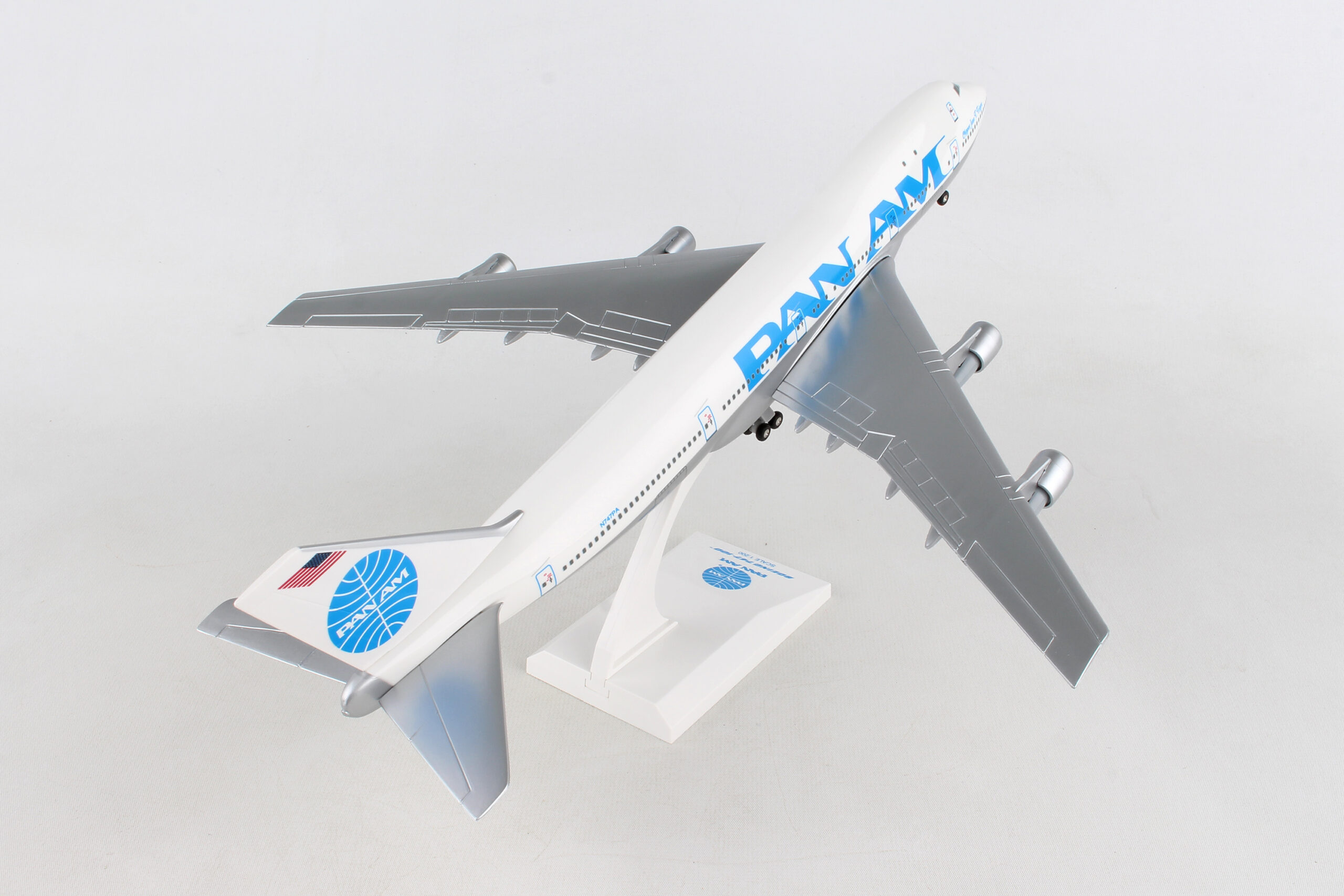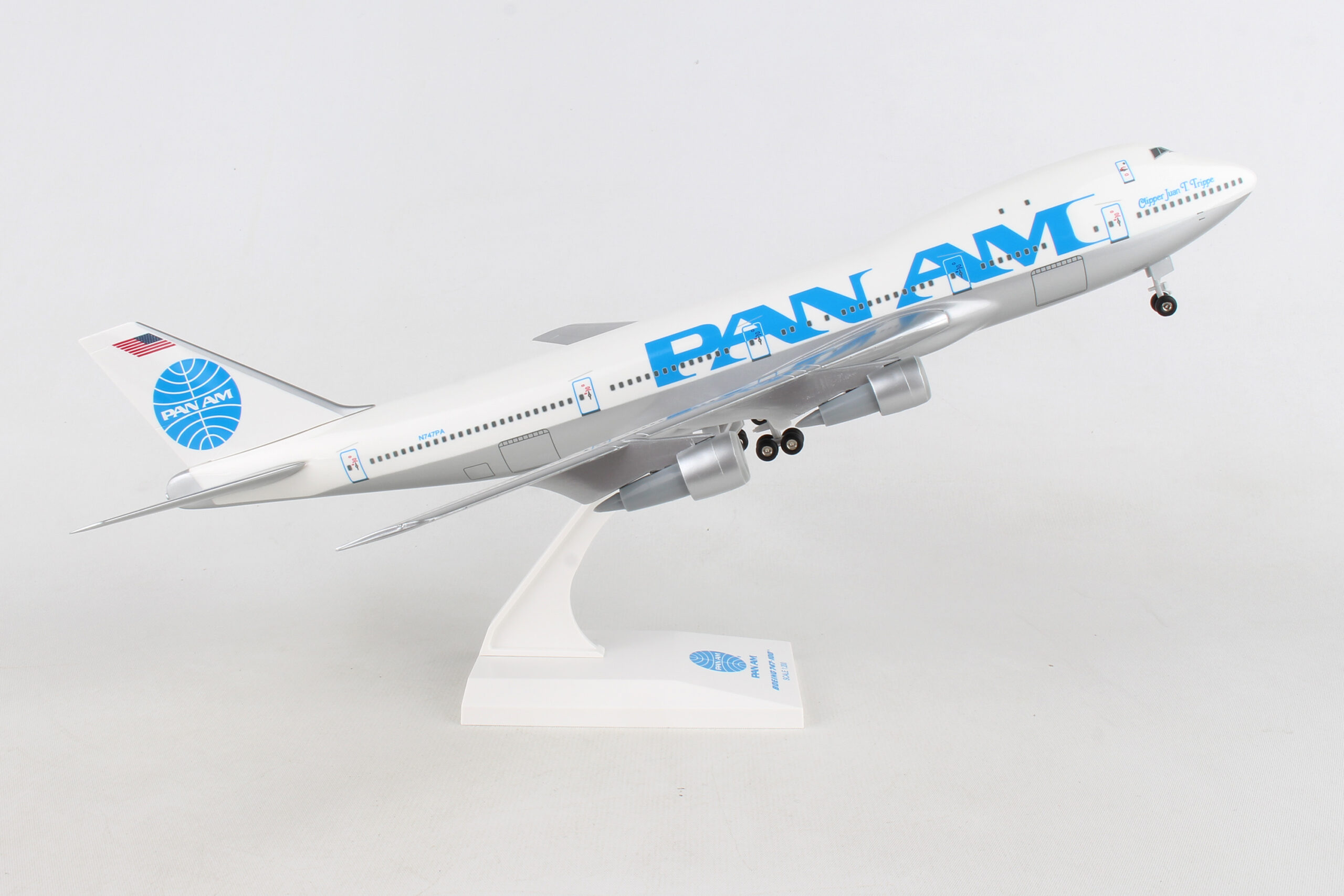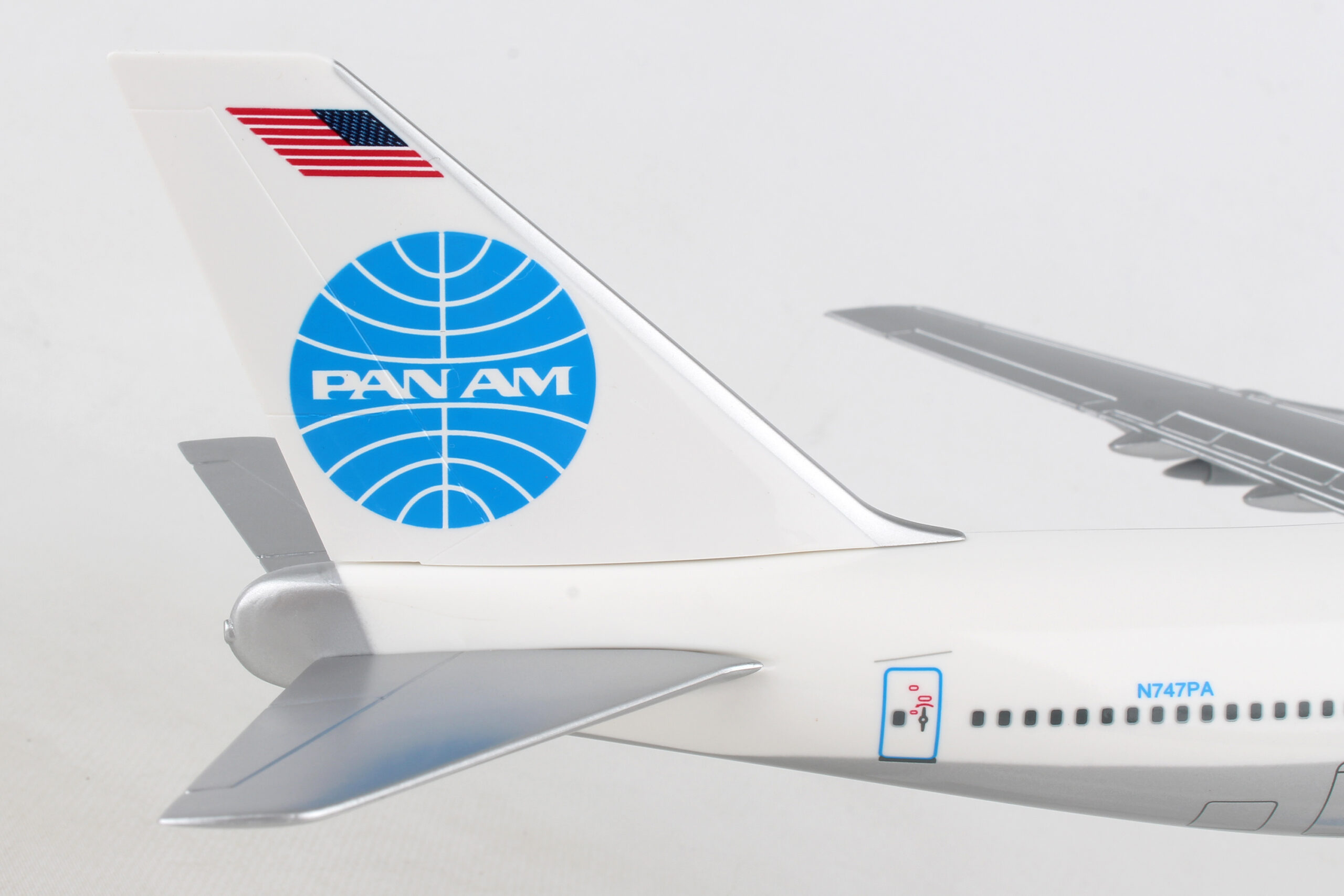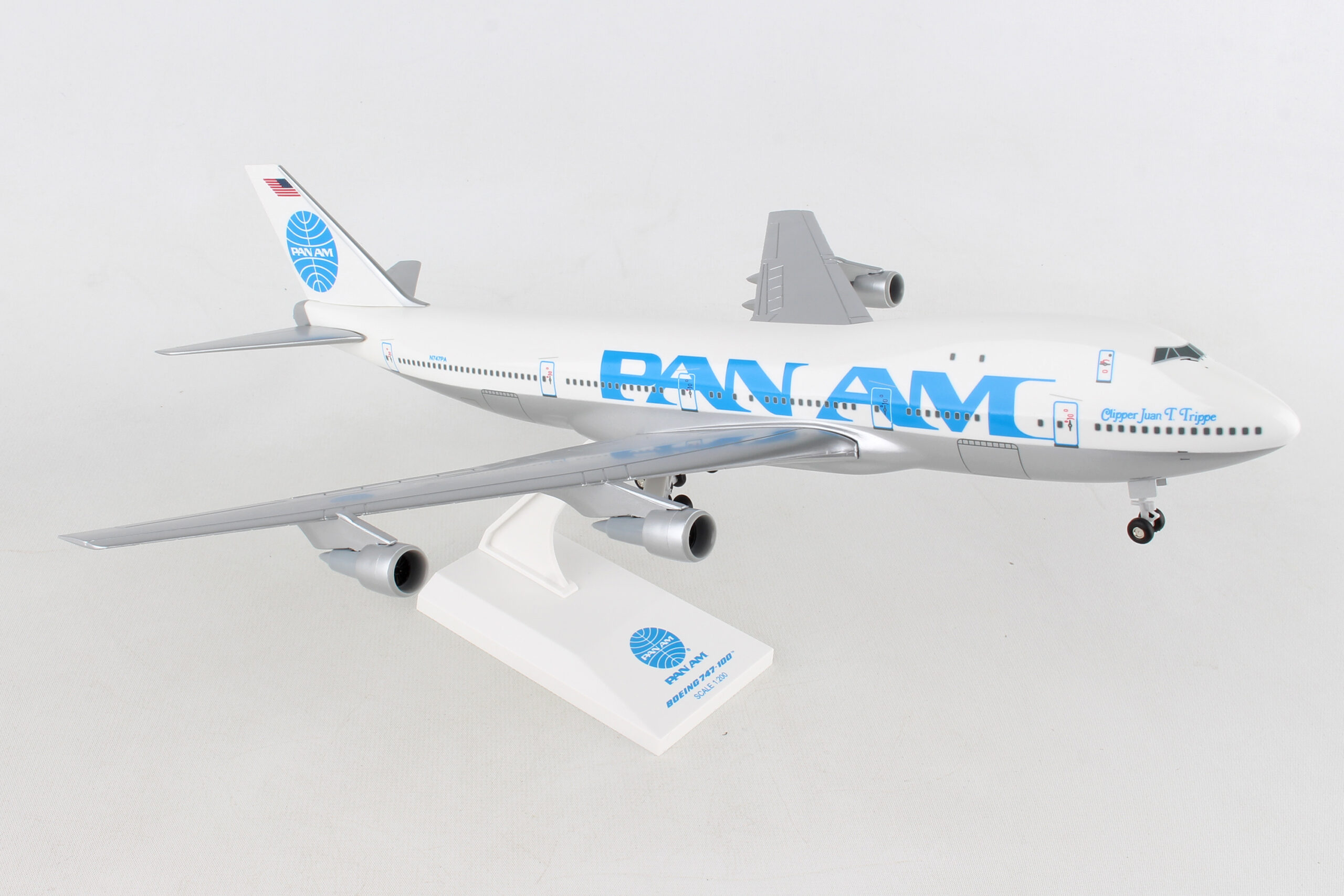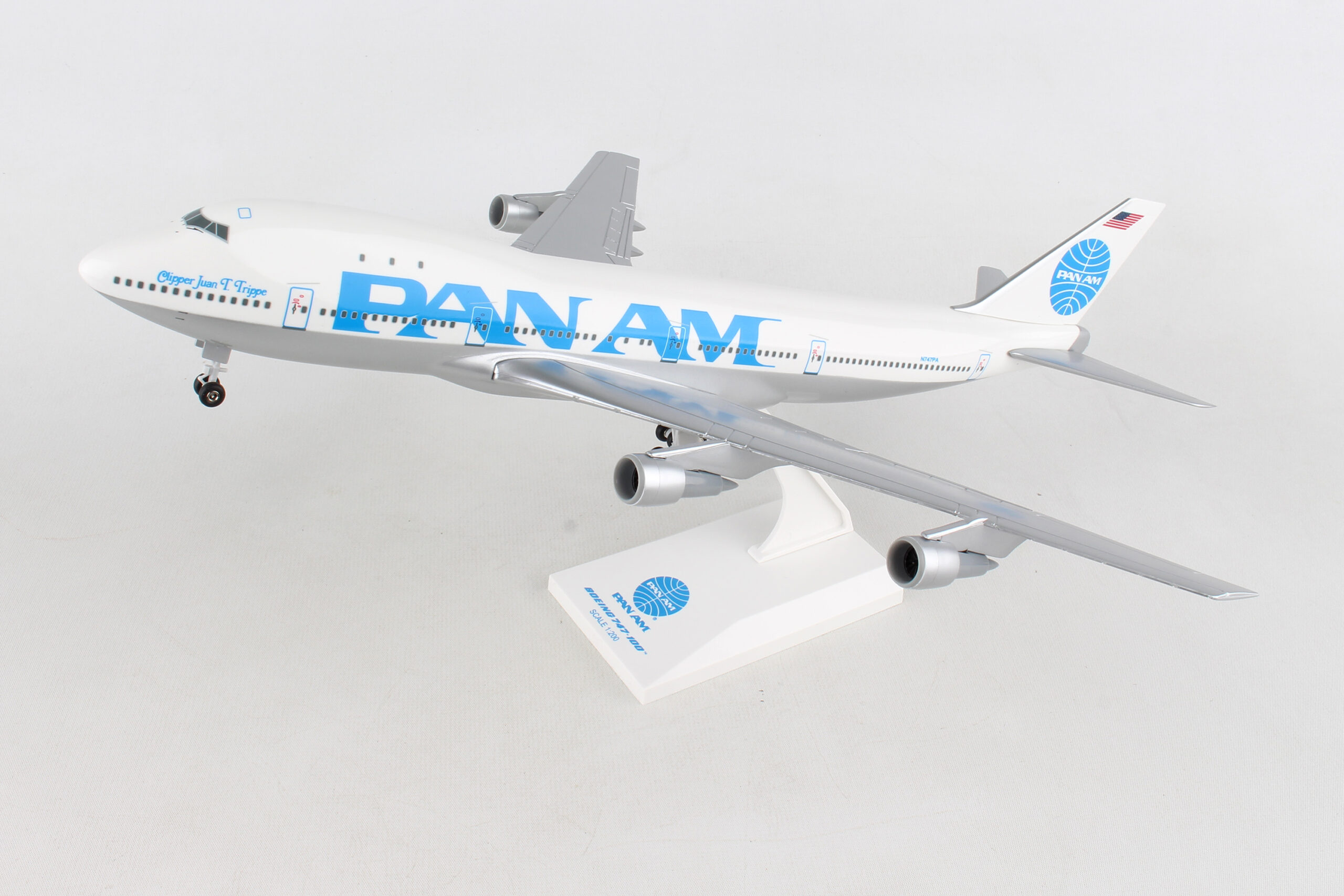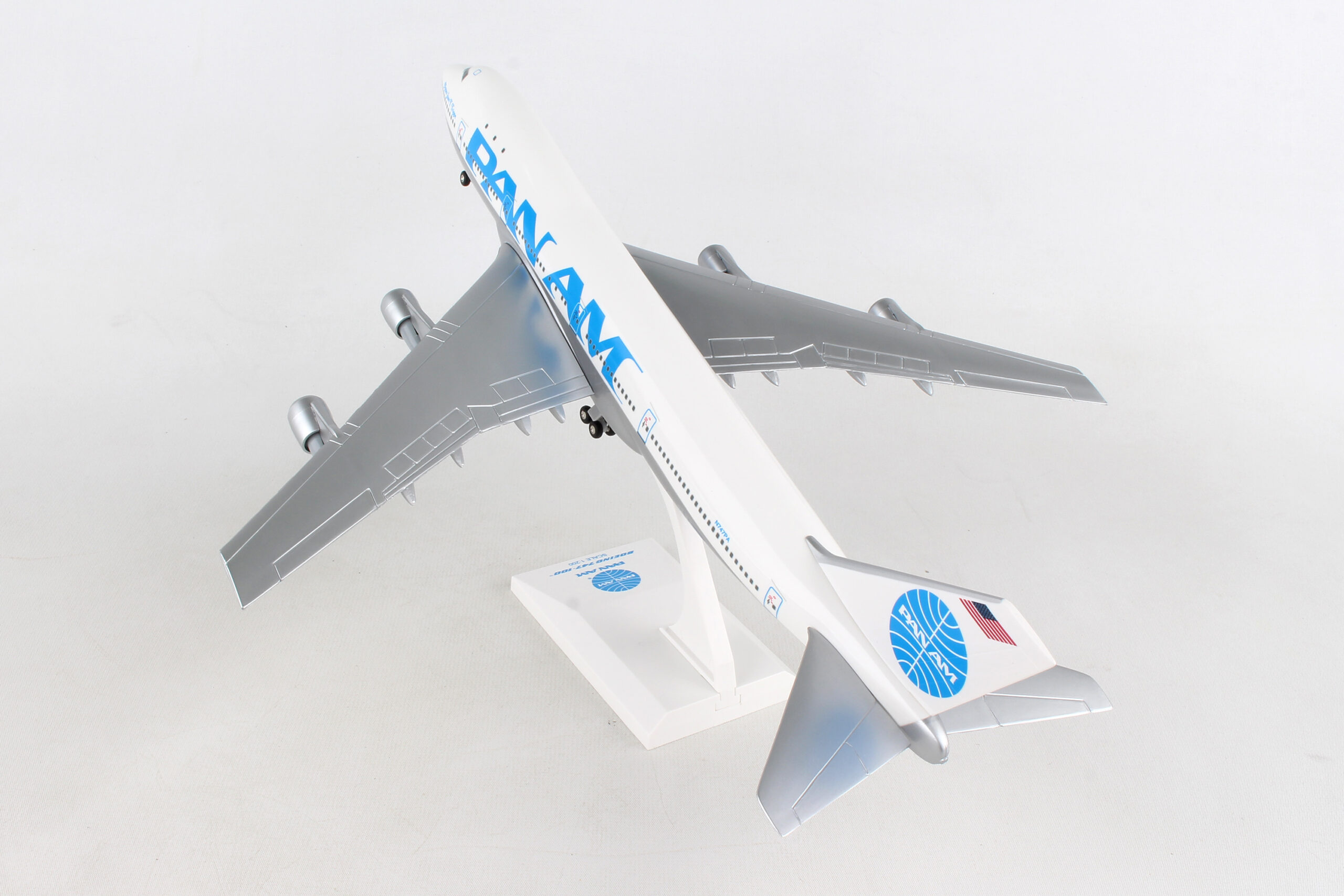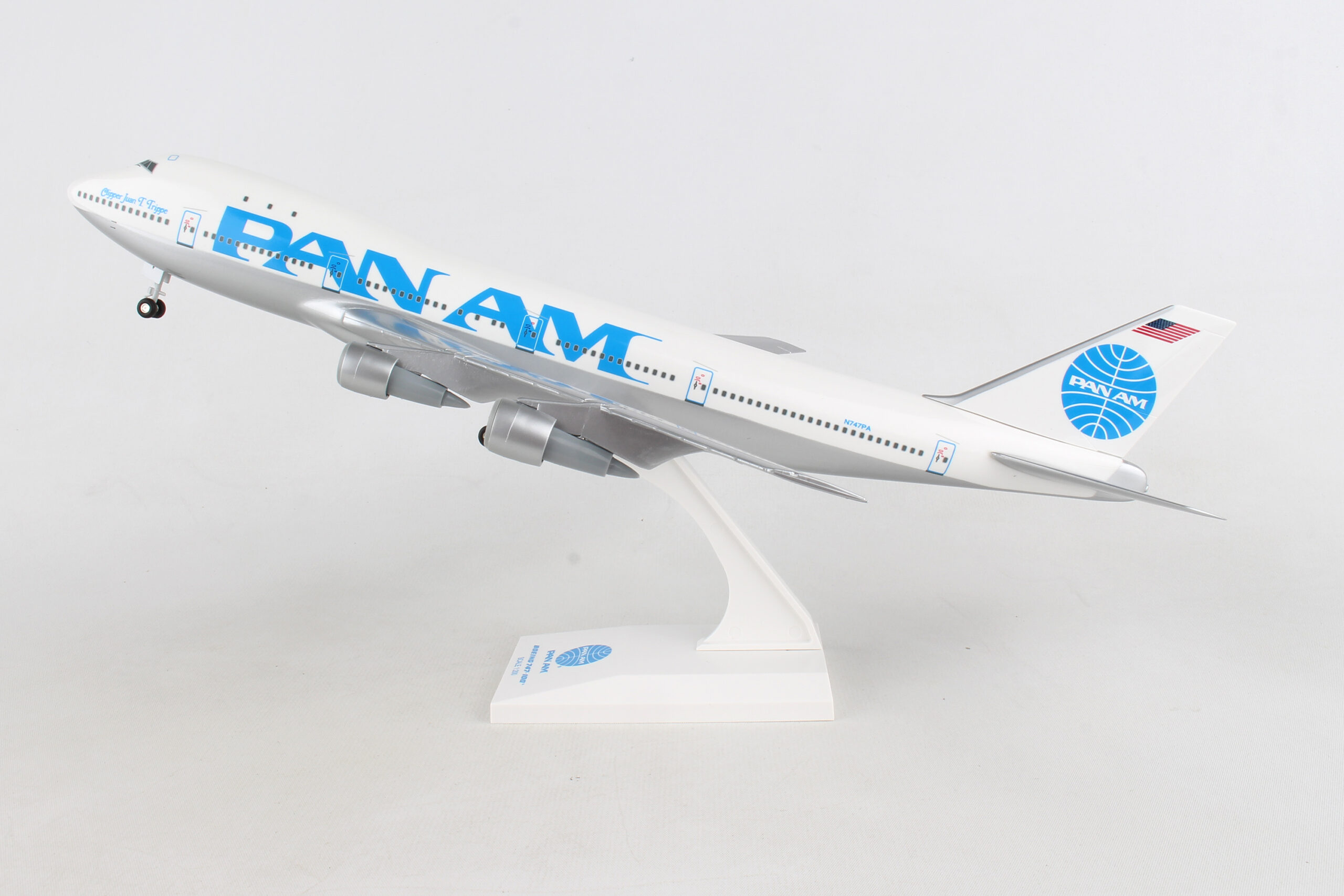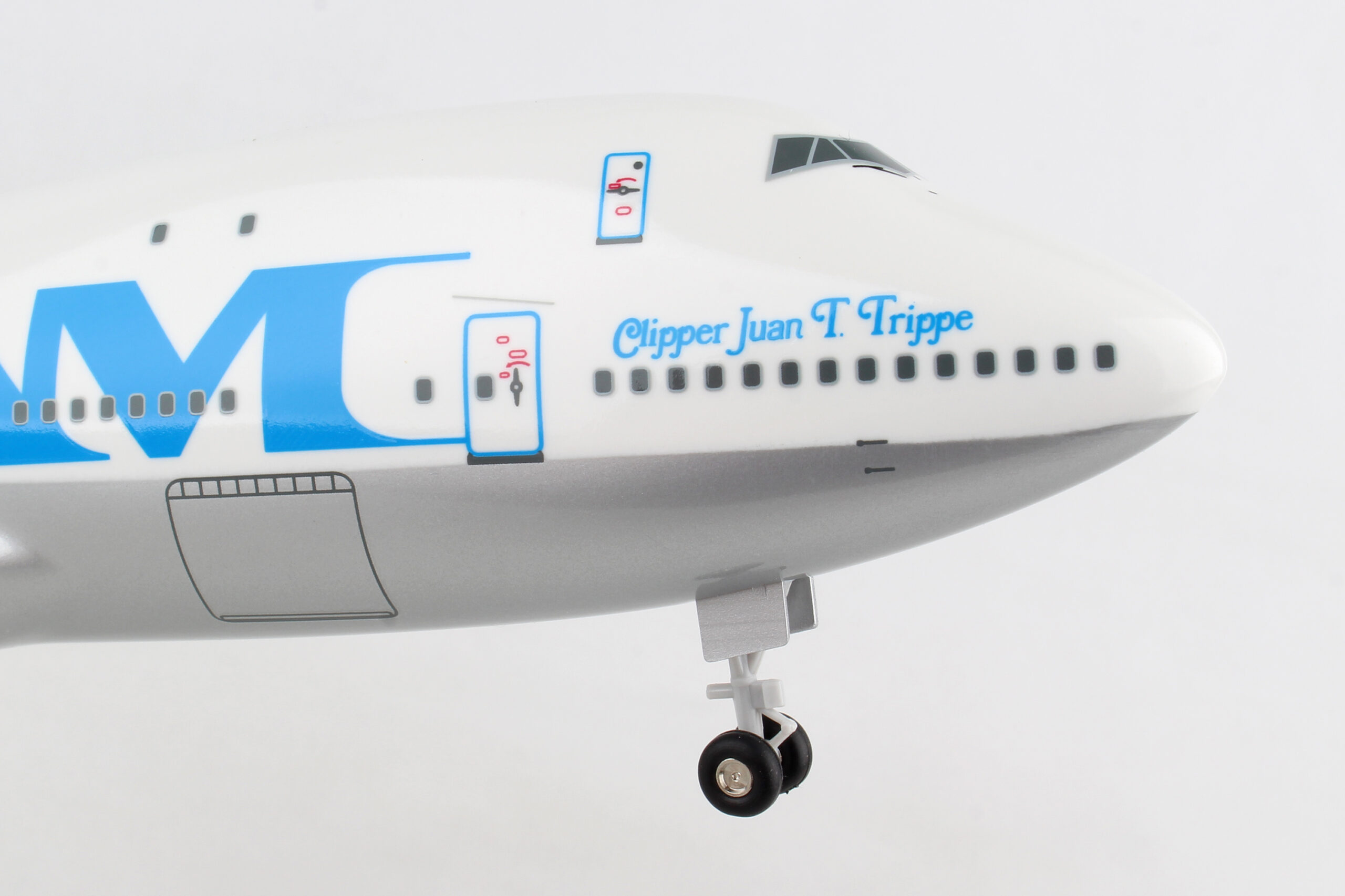SKYMARKS PAN AM 747-100 1/200 W/GEAR JUAN TRIPPE
SKYMARKS PAN AM 747-100 1/200 W/GEAR JUAN TRIPPE
Comprising superior quality, solid, substantial injection molded plastic components with a simple snap-fit design that allows for easy assembly without the need for glue, this SkyMarks 1/200 scale Pan Am Boeing 747-100 measures approximately 13-7/8-inches long with a 12-inch wingspan and comes complete with Landing Gear and a Display Stand. An accurate, true-to-scale reproduction of the actual aircraft, the model is great for collectors and features authentic, highly detailed graphics and markings. Readily recognized around the world by its iconic large hump atop the front of its fuselage, the Boeing 747, nicknamed - Jumbo Jet - entered service in 1970 with Pan Am as the first wide-body airliner, and has primarily been used for long range passenger travel. Although capable of accommodating up to 416 passengers in three different classes, because this large, quad-engine jet was conceived in the mid-1960s, when supersonic transports were also concurrently on the drawing board, and viewed more favorably at the time as the likely successor for the future travel, Boeing engineers and Pan Am CEO, Juan Trippe opted for the Boeing 747 to be designed so that it could be readily converted into a freighter if required by merely retrofitting the fixed nose of the existing passenger aircraft with a large hinged cargo door. Consequently, if a passenger 747 aircraft were ever to be adapted as a cargo plane with a hinged cargo door, it would be much more cost effective and considerably easier to convert existing passenger aircraft into cargo aircraft if the cockpit were located above the nose, thus enabling the existing passenger 747s to continue flying as transformed cargo planes. Even though supersonic transports did not readily materialize for the most part, and did not supersede the Boeing 747 as initially envisioned, over the course of time, the Boeing 747 was not only embraced as a successful passenger and cargo aircraft, many passenger Boeing 747 aircraft were ultimately converted into cargo 747 aircraft, known as BCF - Boeing Converted Freighter(s) when it was no longer viable that they continue to be used as passenger aircraft. The Boeing 747-100, which was launched in 1966, was the original variant of the Boeing 747. Compared to later versions of the 747, the early Boeing 747-100s only had three windows per side on its upper deck. However, after airlines started converting the upper decks of their Boeing 747-100s from lounges into premium class seating, Boeing not only offered its upper deck on the Boeing 747-100 with ten windows per side as an option, some of the earlier three window per side variants were retrofitted accordingly. Although a freighter version of the Boeing 747-100 was never developed, many passenger Boeing 747-100's were later converted into freighters because of Boeing engineers and Pan Am CEO, Juan Trippe's earlier insight to design the passenger version of the Boeing 747-100 accordingly so that it could be easily remanufactured into a freighter. Boeing built 168 Boeing 747-100s, which includes its iconic prototype, named City of Everett.
